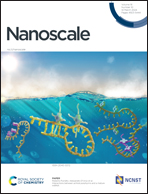A doping strategy to regulate the adsorption energy of Li2S4 and Li2S to promote sulfur reduction on Chevrel phase Mo6Se8 in lithium–sulfur batteries†
Abstract
Atomic doping in catalysts is an effective strategy for adjusting their catalytic activity, which has recently been applied to promote sulfur reduction reactions (SRRs) on the cathode of lithium–sulfur (Li–S) batteries. Herein, the electrocatalytic SRR mechanism of eight metal atom (Ca, Ti, V, Cr, Mn, Fe, Co or Ni) doped Chevrel phase Mo6Se8 were investigated using density functional theory (DFT) calculations. The results reveal that the interaction between polysulfides and the catalyst mainly originates from the coupling of dz2 and dxz orbitals of doped metals and the 3p orbitals of S. The Ti-doped Mo6Se8 system significantly reduces the overpotential of the SRR to only 0.21 V. After analyzing SRR processes over doped and undoped Mo6Se8, no scalar relationship was found between the adsorption energies (Ead) of various polysulfides. Instead, a linear relationship is established between 4Ead-Li2S* − Ead-Li2S4* and overpotential. Finally, a linear relationship between overpotential and descriptors was established based on a machine learning (ML) method, which can accurately predict the overpotential of the SRR over the Mo6Se8 catalyst. This work provides new theoretical insights into the SRR mechanism over metal-selenides and the rational design of a catalyst for Li–S batteries.



 Please wait while we load your content...
Please wait while we load your content...